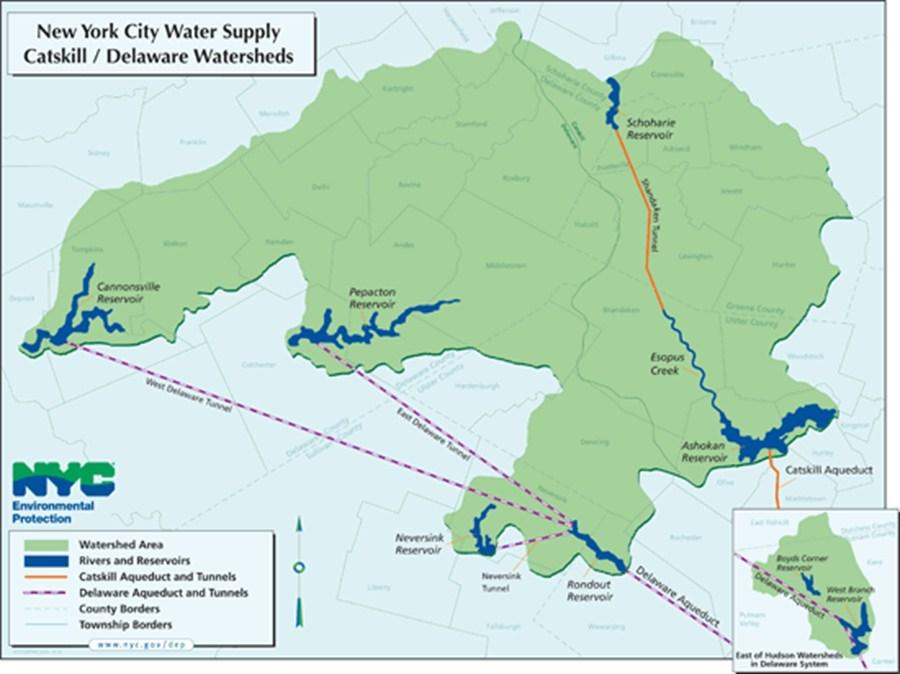
3 minute read
NYC Water
New York City is infamous for having some of the cleanest drinking water in the states, all from the tap. This is in part due to the massive Catskill/Delaware watershed system that delivers around 90% of the massive city’s water supply. But why New York? Of all the places to build a massive watershed system around, why this city? The answer is simple. New York was and remains a massive economic and cultural hub. It’s importance was visible even back when the plan to build the system was first devised, because finding ways to get water to the city was becoming increasingly difficult as the population grew.
In 1905, the City of New York’s government signed an act that allowed them to burrow into the region and build dams, aqueducts, and reservoirs in order to get much needed water into the city. Construction on the reservoirs began in 1907 and officially ended with the creation of the Cannonsville reservoir in 1965. The watershed system is massive, consisting of both the Catskill/Delaware watershed system and the Croton system, funneling 1.4 billion gallons of water into the city a day. Not sure what a watershed is? It functions like a funnel, filtering water in from various lands into large bodies of water, and the natural action of gravity pushes the water from reservoirs to the aqueducts and then through lower elevation until it reaches the city. It should be noted that this water is unfiltered, unlike most municipal water systems, which must be pumped full of various cleansers to help free the water of impurities. New York’s is unfiltered because the watershed system does such a good job of siphoning out the bad stuff through its aqueduct system. But this process did not come without sacrifices. Building the reservoirs led to a number of conflicts, as some states like Pennsylvania and New Jersey fought to keep their lands from NYC’s Board of Water Supply. In order to begin flooding the various lakes, entire towns and people had to be uprooted and moved elsewhere; some were simply just asked to leave. Towns were flooded, remaining under the reservoirs as haunting reminders of the sacrifices made to historically assure New York would remain a strong city of currently 8 million people. Over 2,200 people left their towns, businesses, and homes behind. The towns of Lackawack, Eureka, and Montela all lay at the bottom of the Roundout reservoir, their tanneries and hotels all abandoned. It’s unimportant to many, but after visiting the Time and Valleys Museum in Grahamnsville, New York, it was sobering to see how the history of the region changed and thrived and ultimately fell under miles of water.

It’s a great feat for New York City to have a majority of their drinking water unfiltered; it’s healthier and it’s far more natural. The City and its Department of Water Supply made what some would call ‘necessary sacrifices’ to assure this. It is a vital city, and needed the best of the best when it came to water supply. The watershed system is still expanding to this day, and continues to be under the greatest of protection by the DEP. The DEP assures that little human recreational activity occurs by the watershed, keeping it a pristine community of both man-made lakes and carefully (naturally) built ecosystems. Hopefully this mutual protection of resources will continue for years to come, as this massive system grows and the histories of it remain somewhat murky and forgotten.
Some helpful links:
http://www.pwconserve.org/issues/watersheds/newyorkcity/index.html
http://www.nyc.gov/html/dep/html/watershed_protection/index.shtml

